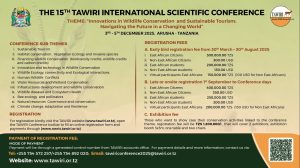The study was conducted in two regions (Tabora and Geita) covering six districts of Urambo, Kaliua, Sikonge, Chato, Bukombe and Mbogwe. Beekeepers reported a low hive occupancy rate such that about one-third of the sited hives in both regions are not occupied by bees. Beekeepers mentioned that livestock disturbances and unfavourable climate are the main factors contributing to low hive occupancy. In addition, most of the beekeepers reported using traditional log hives and bark hives instead of modern box hives. Experienced beekeepers reported a decline in honey production per hive. On average the current production is below 10 litres of honey per hive compared to the past where they could harvest up to 20-30 litres per hive. The study concludes that livestock disturbances, environmental degradation, a decline in forages and unfavorable climate are the most important factors identified to cause a decline in production per hive.
- Category : Projects
- Posted on: August 15, 2023







 Users Today : 15
Users Today : 15 Users Last 7 days : 543
Users Last 7 days : 543 Users This Month : 883
Users This Month : 883 Total Users : 47203
Total Users : 47203